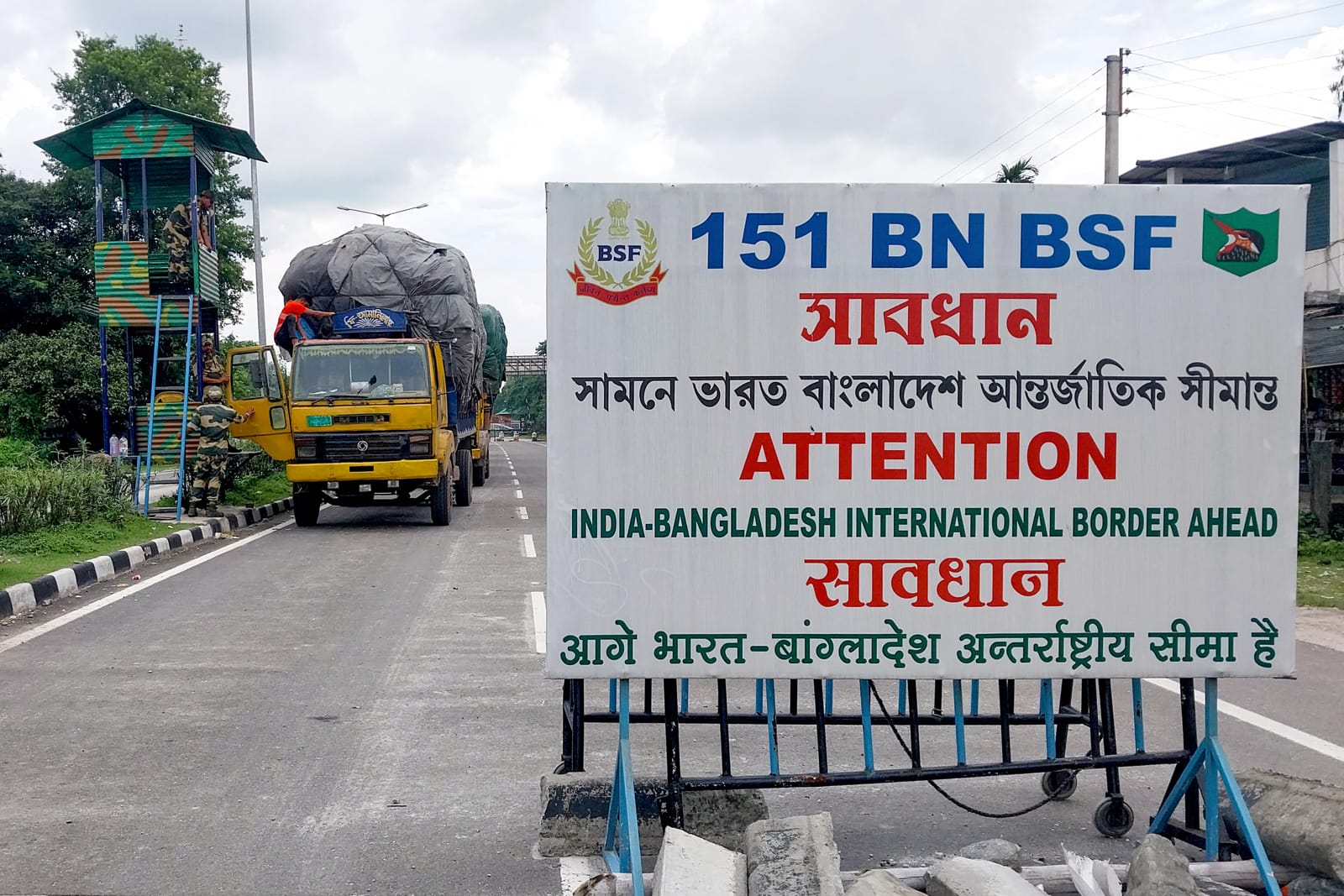Over the past decade, India has invested in enhancing connectivity with its neighbourhood, particularly through physical linkages such as cross-border railways, land ports, waterways and pipelines. These efforts have not only fostered economic ties but are also now demonstrating their resilience during times of political instability.
The recent upheaval in Bangladesh, followed by the resignation of Prime Minister Sheikh Hasina and the formation of an interim government, initially cast doubt on the continuity of New Delhi’s cooperation with Dhaka. However, three weeks on, developments indicate that regime change in Bangladesh may not disrupt the bilateral cooperation with India established during Hasina’s rule.
Capitalising on the need for better connectivity with Bangladesh and to establish an efficient transit route to India’s northeast region, New Delhi and Dhaka have taken big strides in the past few years, having set up six land ports, revived six historical railway lines, and established a Friendship Pipeline for the supply of high-speed diesel. These linkages contributed to Bangladesh becoming India’s largest trade partner in the neighbourhood, and the top five trade partners globally. Between 2014–24, bilateral trade has increased by 95%, and Bangladesh remains the largest source of tourism for India.
To maintain its influence and foster sustainable development, India needs to continue stepping up its engagement with its neighbours.
The temporary closure of land ports and rail lines following Hasina’s resignation caused major disruptions, with reports of Indian trucks and drivers stranded at the border with Bangladesh. Yet within days the largest land port between the two countries, connecting Petrapole in India and Benapole in Bangladesh, was reopened, and trade normalisation efforts began. This swift return to normalcy highlights the robustness of the infrastructure and the underlying economic interdependence that India has cultivated with its neighbours.
On the railway front, Indian Railways suspended cross-border rail movement indefinitely on 5 August. Three passenger rail lines connect Kolkata in India to Dhaka and Khulna in Bangladesh, while six freight trains serve different parts of the country. However, compared to roads, the rail share of freight and passenger transportation is less than four percent overall. While the growing number of rail linkages is important, they cannot yet match the dominance of roads in cross-border movement, making their suspension less economically disruptive.

The experience illustrates how New Delhi’s connectivity projects make a contribution to the stabilisation of relations between countries – not the sole factor but with an important role in managing relations during times of crisis. The ability to quickly restore trade flows and communication channels helps to minimise the economic impact of political disruptions.
Further, India’s connectivity initiatives are not isolated efforts. Like-minded partners, such as the United States, Japan, and Australia, are also actively engaged in the region, coordinating and cooperating on various projects. In Sri Lanka and Nepal, for example, the United States has been involved in the development of the Colombo port and power lines, respectively. Japan has made significant investments in the Matarbari port in Bangladesh, with linkages to India’s northeast region. Australia, through its South Asia Regional Infrastructure Connectivity (SARIC) program, has also been working to improve regional connectivity. Such collaboration underscores the shared strategic interests connecting the region.
The growing economic interdependence resulting from connectivity projects means that it has become increasing costly for the neighbours to exclude New Delhi and other bilateral partners from their developmental plans. Regardless of the political landscape at home, regional governments must consider the critical role that India plays in their economic development. This is particularly important for Bangladesh, with the country set to graduate from the UN categorised least developed country status in 2026, and consequently needing more partnerships to address its growing needs.
However, New Delhi cannot afford to be complacent. The region’s political and economic dynamics are constantly evolving. To maintain its influence and foster sustainable development, India needs to continue stepping up its engagement with its neighbours. The $7.9 billion line of credit extended by India to Bangladesh, of which so far only approximately 16% has been utilised, remains significant. Being overly cautious about the risks to New Delhi’s investments could actually diminish the political value of this line of credit.
Engaging with the interim government in Bangladesh must involve not only sustaining current projects, including the ones announced during Hasina’s visit to India in June 2024, but also identifying new opportunities for collaboration, particularly in emerging sectors such as renewable energy, digital infrastructure, and climate resilience. The future of bilateral connectivity will depend on India’s its ability to adapt to changing circumstances and maintain its position as a key partner in the region’s development.

